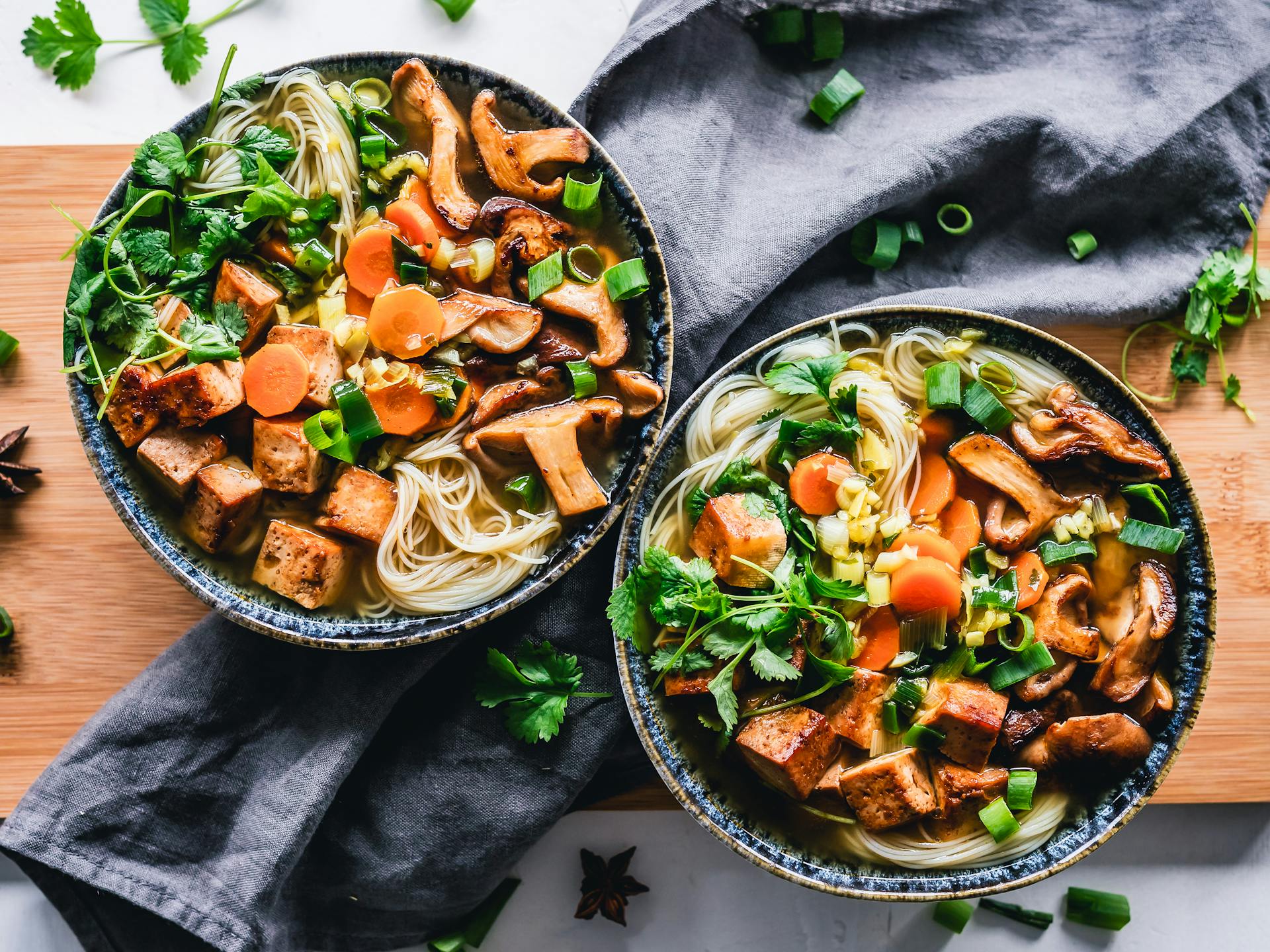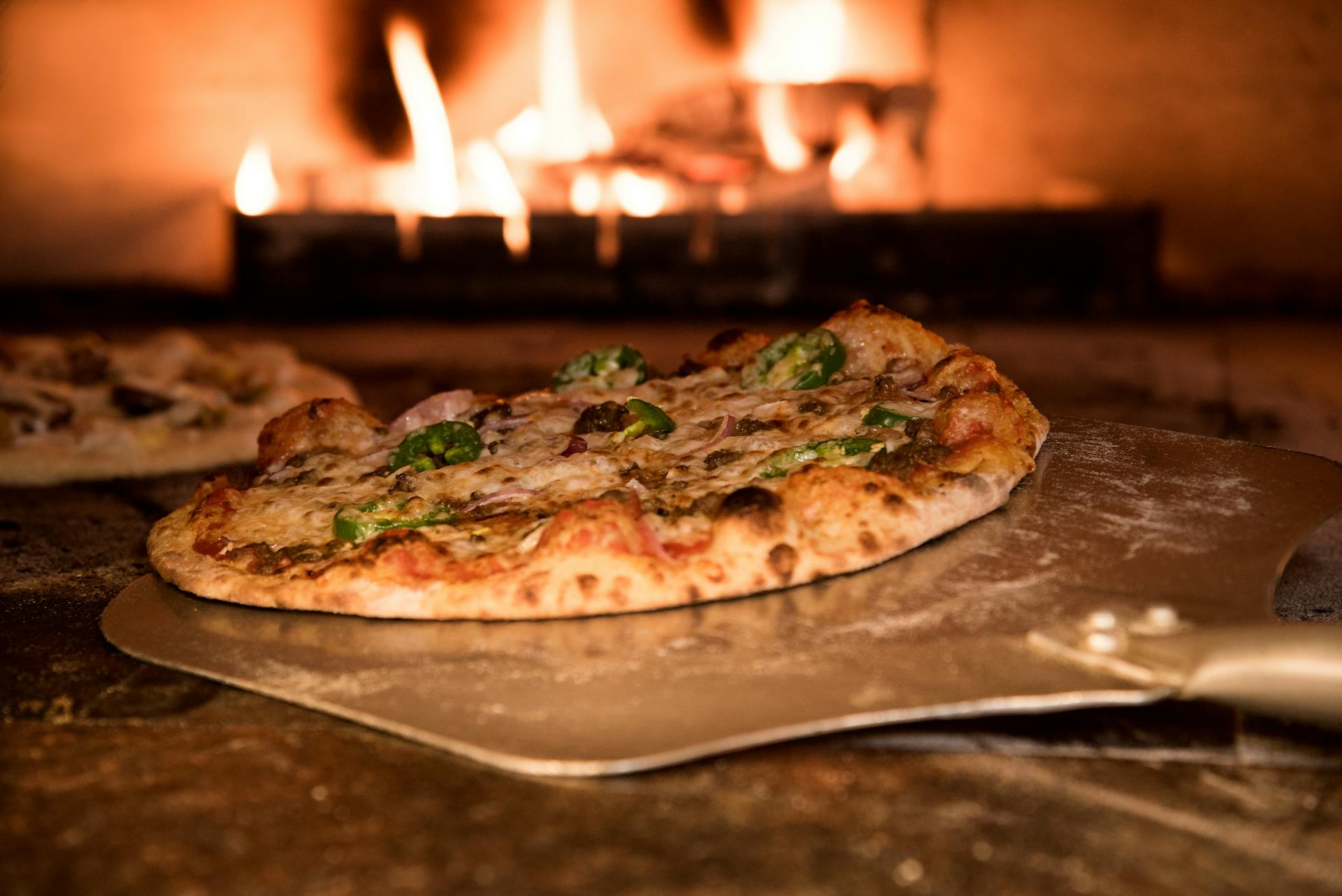
A sauce pan is an essential piece of kitchen equipment for any chef. It's a round pot with two handles and a tight-fitting lid that can be used for a variety of cooking tasks, from boiling to simmering. The shallow sides make stirring and tending to food easy, while the lid helps contain moisture and cooked food if needed.
Typically, sauce pans are made out of stainless steel, aluminum, or copper. All three materials have their advantages when it comes to cooking. For instance, stainless steel is non-corrosive and is often used in restaurant kitchens because it is highly durable and contains no acids or other reactive chemicals that could potentially damage food. Aluminum is lightweight and easy to maneuver around the stovetop, while copper heats up quickly and has excellent heat conduction—ensuring even heating throughout the pan.
In terms of size, a typical saucepan will have a diameter between 8-12 inches with 1 or 2 quarts capacity; however larger sizes of 4 quarts (or more) are available in sets that are ideal for large batches of soup or stew. Additionally, some commercial sizes may range upwards of 20 inches in diameter for more complex sauces that require huge amounts of liquid.
No matter the material or size you choose, one thing remains true: all cooks need at least one great sauce pan in their arsenal! For busy home cooks who face limited time demands when creating meals, utilizing a reliable pan like this can be an absolute asset—with its even heating distribution and tightly fitted lid helping you whip up meals in no time at all!
Discover more: Recycle Aluminum Pie Pans
How is a sauce pan used?
A saucepan is an incredibly useful kitchen tool that is used in many dishes. A sauce pan is typically round and contains a heavy bottom providing even heat distribution, making them suitable for slow cooking, as well as simmering sauces, soups, stews, and a variety of other dishes.
There are many ways to use a saucepan for cooking. For example, it's great for reducing sauces because the heavy bottom ensures that the ingredients simmer rather than boil too quickly. This allows the flavor to develop into something delicious! Additionally, sautéing vegetables in a little oil on the stovetop becomes much easier if they can be moved around easily in a large and wide-bottomed pan. Otherwise, stirring too vigorously can break apart more fragile vegetables such as mushrooms or zucchini.
In addition to cooking savory dishes, saucepans are equally useful in baking--especially when it comes to melting butter or chocolate chips for baked goodness! Saucepans provide much more control over lower heat settings than microwaves do and allow for better control over time so you don’t end up with any burnt ingredients! Finally, most saucepans come with lids which makes an invaluable difference when reheating leftovers by trapping rising steam inside the pan and raising its interior temperature faster - saving you time and energy!
As evident from this post, there are plenty of ways to use a simple kitchen tool like a saucepan which can help make your cooking process quicker and easier. Whether you’re whipping up vegetable stir-fry or preparing hot cocoa mix for cold evenings - you'll love the convenience of having one handy in your kitchen!
What are some of the advantages of a sauce pan?
Sauce pans may seem like humble kitchen utensils, but they’re actually incredibly versatile and offer numerous advantages. Think of sauce pans as the multi-tool of your kitchen, letting you cook up all kinds of delicious meals with ease and speed. Here’s a few advantages of having a sauce pan in your arsenal:
First, sauce pans come in a wide variety of sizes that let you tackle a range of cooking tasks. From making oatmeal for breakfast to simmering soup for dinner, the right size sauce pan makes it easy to cook quickly and safely.
Second, objects such as pasta can be boiled in a sauce pan with relative control. The tall sides make it difficult for items to fall out or boil over, offers much more control than regular pots. This is particularly helpful for making large batches of pasta using multiple boxes at once.
You can also “fry” items in a sauce pan without needing to use oil or butter if desired. This makes it possible to lighten up some recipes without changing their look or feel.
Finally, many modern models feature lids that help retain heat and moisture while cooking food faster due its added insulation prowess - ideal when making stews and other slow cooked dishes with minimal effort required from you! Better yet, the lids are designed to stay cool enough so that you don't burn yourself when lifting them up periodically during cooking to check on your dish.
As you can see, there’s lots of ways to utilize the humble but fantastic sauce pan! With its versatile size options and useful lid design features it's an essential addition to any kitchen!
What materials are sauce pans typically made of?
Sauce pans are an essential kitchen utensil for many home cooks, used to simmer and thicken sauces, cook grains and pasta, and more. The material of construction affects how the pan both looks and performs — so it’s important to choose a sauce pan that suits your cooking needs.
The most common choices for sauce pans are stainless steel, aluminum or copper. Stainless steel offers excellent durability and a shiny finish, while aluminum (often mixed with other metals) provides lightweight performance along with good heat distribution. Copper is known for its good heat conductivity and beautiful color, although it can be expensive and require extra care.
Nonstick surfaces also come in handy for sauce pans — but should be used with caution depending on the material you’re using. If you’re dealing with delicate ingredients or plan to use the pan over high temperatures, opt for one that uses safe nonstick materials such as ceramic-based coatings instead of chemical-laden teflon varieties. Quality nonstick surfaces are also helpful as they reduce cleanup time significantly when compared to conventional materials!
Ultimately, when picking out a sauce pan it’s important to consider the materials that you prefer as well as your cooking needs — whether you need even heat distribution, prefer nonstick surfaces or want something heavy-duty durable than can handle higher temperatures. With so many options available these days its worth making sure you pick up the right one that fits both your budget and style of cooking!
Are sauce pans safe to use on all types of stovetops?
Sauce pans can be a great type of cookware for making sauces, preparing vegetables, melting chocolate, and more. But this versatile piece of cookware can come with its own set of risks when used on certain stovetops.
The safety of a saucepan is largely dependent on what type of heat source you're using. This is because some stovetops generate much higher amounts of heat than others, which could lead to warping or extreme damage to the pan. If you have an electric stovetop or one that uses induction cooking, you'll need to make sure that the saucepan is compatible before using it. This is typically indicated by the type of material and whether the pan is labeled ‘induction-ready’ or contains a ‘magnetic disk’ at its base.
Gas stoves generally offer more flexibility in terms of saucepans. As long as they are made from materials that are not combustible (such as stainless steel), they will be safe to use on gas stovetops without any special labeling or features. However, always remember to never use uncoated aluminum pans as they are highly susceptible to burning and causing hazardous situations if exposed to extreme temperatures for too long.
In short, staying aware of the types of cookware you're using on different stovetops can help ensure your safety in the kitchen. Opting for an induction-ready or gas-compatible saucepan and avoiding uncoated aluminum pans should help you keep your kitchen secure and ensure safe cooking experiences all around!
What is the best way to clean a sauce pan?
For anyone who loves to cook, maintaining cleanliness in the kitchen should be of paramount importance. The best way to keep your kitchen and the tools you use tidy is to thoroughly clean your kitchenware after every use. This includes taking care of the multitude of pans and pots you possess. In this article, we will discuss the best way to clean a sauce pan and make sure it remains in tip top condition!
To start off, gathering all necessary cleaning materials is key. A sponge or cloth that can handle tougher bits of residue is a must but a non-abrasive scrubber should be enough for basic cleaning needs. You will also want hot water with detergent (or alternatively baking soda) as this mixture has been proven to be the most effective way to effectively remove grease from a saucepan.
Once you have gathered all your needed materials, clear off any excess food residue that may be on the pan before beginning the cleaning process proper. Next begin by scrubbing away at any stuck on pieces with your chosen soap/dish washing powder, making sure that all dirt and grime has been removed from crevices and uneven surfaces. After doing this routinely for anywhere from two to ten minutes (depending on the level of dirt accumulated) rinse the pan off with hot water. For finishing touches and extra shine, some people may add extra liquid dish soap or vinegar into their hot bath so as to help get rid of any odours that persist in spite of all your cleaning efforts!
Taking downtime every once in awhile to properly clean your kitchenware is one way to optimise hygiene within your home which is why we mentioned it as important at the very start! The best way you can do it though? As we have outlined above! Use hot water, detergent and adequate elbow grease, then just sit back and marvel at your beautiful, shining cleaned saucepans – how satisfying indeed!
What size of sauce pan is typically recommended for everyday use?
When it comes to purchasing a new saucepan, size matters. While many cooks might be tempted to purchase the largest pot they can find, an unnecessarily big pot can take up too much valuable kitchen space - especially if you are limited on how much room you have in which to store your cookware. Though larger sizes are occasionally necessary for more robust dishes and family-sized meals, a medium-sized pan is typically recommended for everyday use.
The perfect size for regular cooking is typically between 2-4 quarts and about 8 to 10 inches wide. This medium-sized pan holds enough food for a regular amount of servings - just enough for your family or small dinner party – while still being large enough to accommodate larger ingredients such as full chicken breasts or even multiple pork chops. This size is also great for sauce reduction on the stovetop, creating creamy gravies tamales, pasta dishes or simmering a generous portion of chili.
In addition to its manageable size, this traditional knob top handled sauté pan features sloped sides that make it easy to stir and maneuver your ingredients without risking spillage. Since it packs plenty of volume without taking up too much kitchen real estate, this type of saucepan is the ideal size for everyday use while providing all of the functionality you need in the kitchen.
Featured Images: pexels.com


